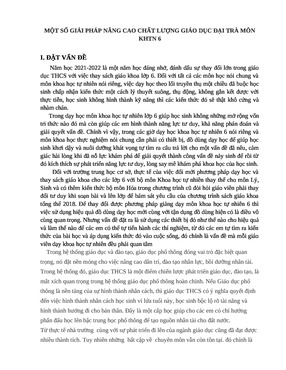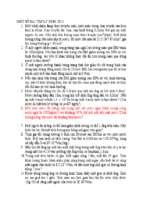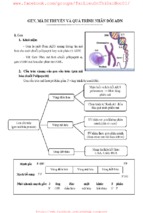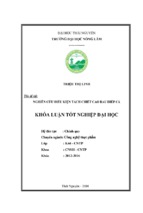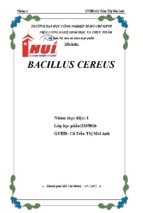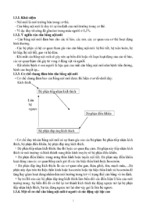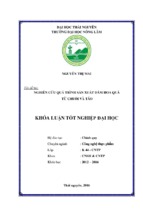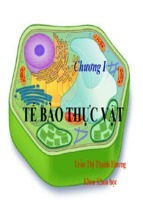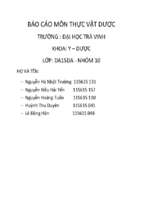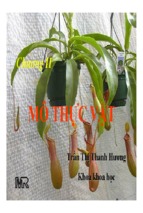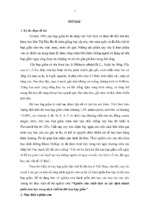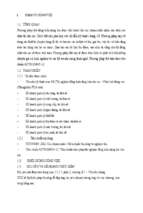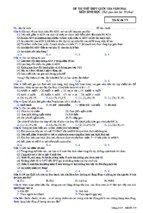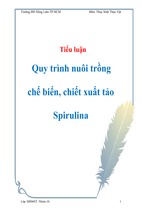Essentials of Stem Cell Biology
Second Edition
This page intentionally left blank
Essentials of Stem Cell Biology
Second Edition
EDITORS
Robert Lanza
John Gearhart
Brigid Hogan
Douglas Melton
Roger Pedersen
E. Donnall Thomas
James Thomson
Sir Ian Wilmut
AMSTERDAM • BOSTON • HEIDELBERG • LONDON • NEW YORK • OXFORD
PARIS • SAN DIEGO • SAN FRANCISCO • SINGAPORE • SYDNEY • TOKYO
Academic Press is an imprint of Elsevier
Academic Press is an imprint of Elsevier
525 B Street, Suite 1900, San Diego, CA 92101-4495, USA
30 Corporate Drive, Suite 400, Burlington, MA 01803, USA
32 Jamestown Road, London NW1 7BY, UK
First edition 2006
Second edition 2009
Copyright © 2009 Elsevier Inc. Apart from Chapter 68 which is in the public domain.
All rights reserved.
No part of this publication may be reproduced, stored in a retrieval system or transmitted in
any form or by any means electronic, mechanical, photocopying, recording, or otherwise without
the prior written permission of the publisher
Permissions may be sought directly from Elsevier’s Science & Technology Rights
Department in Oxford, UK: phone: (⫹44) (0)1865 843830; fax: (⫹44) (0) 1865 853333;
e-mail:
[email protected]. Alternatively visit the Science and Technology Books
website at www.elsevierdirect.com/rights for further information
Notice
No responsibility is assumed by the publisher for any injury and/or damage to persons or
property as a matter of products liability, negligence or otherwise, or from any use or operation
of any methods, products, instructions or ideas contained in the material herein. Because of
rapid advances in the medical sciences, in particular, independent verification of diagnoses and
drug dosages should be made
Library of Congress Cataloging-in-Publication Data
A catalog record for this book is available from the Library of Congress
British Library Cataloging in Publication Data
A catalog record for this book is available from the British Library
ISBN: 978-0-12-374729-7
For information on all Academic Press publications
visit our website at www.elsevierdirect.com
Typeset by Macmillan Publishing Solutions
(www.macmillansolutions.com)
Printed in Canada
09 10 11 12 13
10 9 8 7 6 5 4 3 2 1
Contents
Contributors
ix
Preface
Robert Lanza
xv
Foreword
Professor Sir Martin Evans
Nobel Laureate
xvii
6. Molecular Bases of Pluripotency
xix
A New Path: Induced Pluripotent Stem Cells
Shinya Yamanaka
xxi
xxiii
37
39
Fatima Cavaleri and Hans Schöler
7. Stem Cell Niches
Why Stem Cell Research
Alan Trounson
“Stemness”: Definitions, Criteria, and Standards
Douglas A. Melton and Chad Cowen
Part II
Basic Biology/Mechanisms
61
D. Leanne Jones and Margaret T. Fuller
8. Mechanisms of Stem Cell
Self-renewal
73
Hitoshi Niwa
9. Cell Cycle Regulators in Adult
Stem Cells
81
Tao Cheng and David T. Scadden
Part I
Introduction to Stem Cells
1. Pluripotential Stem Cells from
Vertebrate Embryos: Present
Perspective and Future Challenges
1
3
Richard L. Gardner
2. Embryonic Stem Cells in
Perspective
13
Janet Rossant
3. The Development of Epithelial
Stem Cell Concepts
5. Clinical Translation of Stem Cells
Olle Lindvall
11. Cell Fusion and the Differentiated
State
29
33
105
Penny Johnson and Peter W. Andrews
12. How Cells Change Their
Phenotype
111
David Tosh and Marko E. Horb
13. Differentiation in Early
Development
Dirk Hockemeyer, Frank Soldner, and
Rudolf Jaenisch
89
Nathan Montgomery, Terry Magnuson, and
Scott Bultman
Part III
17 Tissue and Organ Development
Christopher S. Potten and J. W. Wilson
4. Direct Reprogramming of Somatic
Cells to a Pluripotent State
10. Epigenetic Mechanisms of Cellular
Memory During Development
117
119
Susana M. Chuva de Sousa Lopes and
Christine L. Mummery
14. Primordial Germ Cells in Mouse
and Human
131
Anne McLaren and Susana M. Chuva de Sousa
Lopes
v
vi
Contents
15. Stem Cells in Extraembryonic
Lineages
30. Skeletal Muscle Stem Cells
137
Tilo Kunath and Janet Rossant
16. Amniotic Fluid-Derived
Pluripotential Cells
145
151
Hal E. Broxmeyer
18. Neurogenesis in the Vertebrate
Embryo
31. Stem Cells and the Regenerating
Heart
259
Maria Paola Santini, Bhawana Poudel, and
Nadia Rosenthal
Anthony Atala
17. Cord Blood Hematopoietic
Stem and Progenitor Cells
249
Helen M. Blau, Alessandra Sacco and
Penney M. Gilbert
157
32. Potential of Embryonic and Induced
Pluripotent Stem Cell Differentiation
Culture for Vascular Biology
265
Jun K. Yamashita, Satomi Nishikawa, and
Shin-Ichi Nishikawa
Chris Kintner and Naoko Koyano-Nakagawa
19. The Nervous System
169
Lorenz Studer
Christian Mirescu and Elizabeth Gould
185
189
23. The Ontogeny of the Hematopoietic
System
199
Malcolm A. S. Moore
211
George Q. Daley
25. Red Blood Cells
217
Shi-Jiang Lu, Jennifer S. Park, Qiang Feng, and
Robert Lanza
26. Cell Differentiation in the Skeleton 223
Gerard Karsenty
27. Human Vascular Progenitor Cells
227
Ayelet Dar, Sharon Gerecht-Nir, and Joseph
Itskovitz-Eldor
Catherine M. Verfaillie and Annelies Crabbe
Arnold I. Caplan
299
36. Stem Cells in the Gastrointestinal
Tract
307
Stuart A. C. McDonald, Trevor A. Graham,
Adam Humphries, Nicholas A. Wright,
Sean L. Preston, Mairi Brittan, and
Natalie C. Direkze
Part IV
Methods
329
37. Induced Pluripotent Stem Cell
Derivation
331
Junying Yu and James A. Thomson
38. Characteristics and Characterization
of Human Pluripotent Stem Cells
339
Anne G. Bang and Melissa K. Carpenter
39. Isolation and Maintenance of Murine
Embryonic Stem Cells
345
Martin Evans
28. Multipotent Adult Progenitor Cells 233
29. Mesenchymal Stem Cells
285
Markus Grompe
Yuval Dor and Douglas A. Melton
Tudorita Tumbar and Elaine Fuchs
24. Hematopoietic Stem Cells
34. Adult Liver Stem Cells
35. Pancreatic Stem Cells
Connie Cepko and Donna Fekete
22. Epithelial Hair Follicle Stem Cells
273
Gregory R. Dressler
20. Neuronal Progenitors in the
Adult Brain: From Development to
Regulation
179
21. Sensory Epithelium of the Eye and
Ear: Update of Retinal Stem Cell
Research 2003 to the Present
33. Cell Lineages and Stem Cells
in the Embryonic Kidney
243
40. Isolation, Characterization and
Maintenance of Primate Embryonic
Stem Cells
351
Michal Amit and Joseph Itskovitz-Eldor
vii
Contents
41. Approaches for Derivation and
Maintenance of Human Embryonic
Stem Cells: Detailed Procedures and
Alternatives
365
Irina Klimanskaya and Jill McMahon
381
Alice Pébay and Martin F. Pera
397
409
417
423
Jonathan S. Draper and Peter W. Andrews
429
437
M. Azim Surani
443
Gerald J. Spangrude and William B. Slayton
51. Microarray Analysis of Stem
Cells and Differentiation
449
Howard Y. Chang and Xin Chen
52. Zebrafish and Stem Cell Research
459
Emily K. Pugach, K. Rose Finley, and
Leonard I. Zon
Part V
Applications
53. Cancer Stem Cells
Michael Rothenberg and Michael F. Clarke
529
60. Stem Cells for the Treatment of
Muscular Dystropy: Therapeutic
Perspectives
543
Maurilio Sampaolesi and Giulio Cossu
61. Regeneration of Epidermis from
Adult Keratinocyte Stem Cells
551
Ariane Rochat and Yann Barrandon
Andras Nagy
50. Isolation and Characterization of
Hematopoietic Stem Cells
523
Edward Upjohn, George Varigos, and
Pritinder Kaur
Annarosa Leri, Piero Anversa, and Jan Kajstura
Thomas P. Zwaka and James A. Thomson
49. Genomic Reprogramming
Susan Bonner-Weir and Gordon C. Weir
59. Stem Cells and Heart Disease
Yoav Mayshar and Nissim Benvenisty
48. Lineage Marking
507
57. Insulin-producing Cells Derived from
Stem Cells: A Potential Treatment
for Diabetes
513
58. Burns and Skin Ulcers
Holly Young, Tom Schulz, and
Melissa K. Carpenter
47. Surface Antigen Markers
56. Use of Embryonic Stem Cells to
Treat Heart Disease
Michael Rubart and Loren J. Field
43. Growth Factors and the Serum-free
Culture of Human Pluripotent
Stem Cells
391
46. Homologous Recombination in
Human Embryonic Stem Cells
497
John W. McDonald and Daniel Becker
Michael J. Shamblott, Candace L. Kerr, Joyce
Axelman, John W. Littlefield, Gregory O. Clark,
Ethan S. Patterson, Russell C. Addis, Jennifer N.
Kraszewski, Kathleen C. Kent, and
John D. Gearhart
45. Genetic Manipulation of Human
Embryonic Stem Cells
485
Rodolfo Gonzalez, Jean Pyo Lee, and
Evan Y. Snyder
55. Spinal Cord Injury
42. Derivation and Differentiation
of Human Embryonic Germ Cells
44. Feeder-free Culture
54. Neural Stem Cells for Central
Nervous System Repair
62. Orthopedic Applications of
Stem Cells
561
Jerry I. Huang and Victor M. Goldberg
63. Embryonic Stem Cells in Tissue
Engineering
571
Shulamit Levenberg, Ali Khademhosseini, and
Robert Langer
64. Postnatal Stem Cells in Tissue
Engineering
583
Pamela Gehron Robey and Paolo Bianco
65. Stem Cell Gene Therapy
591
Brian R. Davis and Nicole L. Prokopishyn
467
Part VI
Regulation and Ethics
599
469
66. Ethical Considerations
601
Ronald M. Green
viii
Contents
67. Stem Cell Research: Religious
Considerations
609
Margaret A. Farley
68. Stem Cell-based Therapies: Food and
Drug Administration Product and
Pre-Clinical Regulatory
Considerations
619
Donald W. Fink and Steven R. Bauer
69. It’s Not About Curiosity, It’s About
Cures: People Help Drive Progress 631
Mary Tyler Moore with S. Robert Levine
Index
637
Contributors
Numbers in parentheses indicate the chapter number of the authors’
contribution.
Russell C. Addis (42) John Hopkins University, School of
Medicine, Baltimore, MD
Michal Amit (40) Department of Obstetrics and
Gynecology, Rambam Medical Center, and The Bruce
Rappaport Faculty of Medicine, Technion–Israel
Institute of Technology, Haifa, Israel
Peter W. Andrews (11, 47) Department Biomedical Science,
University of Sheffield, Western Bank, Sheffield, UK
Piero Anversa (59) Departments of Anesthesia and
Medicine, and Cardiovascular Division, Brigham and
Women’s Hospital, Harvard Medical School, Boston, MA
Susan Bonner-Weir (57) Section on Islet Transplantation
and Cell Biology, Joslin Diabetes Center, Harvard
Medical School, Boston, MA
Mairi Brittan (36) Centre for Gastroenterology, Institute
of Cell and Molecular Sciences, Barts and the London
School of Medicine and Dentistry, London, UK
Hal E. Broxmeyer (17) Walther Oncology Center and
Department of Microbiology and Immunology, Indiana
University School of Medicine, Indianapolis, IN
Scott Bultman (10) Department of Genetics, University of
North Carolina at Chapel Hill, NC
Arnold I. Caplan (29) Skeletal Research Center, Case
Western Reserve University, Cleveland, OH
Anthony Atala (16) Wake Forest Institute for Regenerative
Medicine, Wake University School of Medicine,
Winston-Salem, NC
Melissa K. Carpenter (38, 44) Carpenter Group, 10330
Wateridge Circle #290, San Diego, CA
Joyce Axelman (42) John Hopkins University, School of
Medicine, Baltimore, MD
Fatima Cavaleri (6) Max Planck Institute for Molecular
Biomedicine, Muenster, Germany
Anne G. Bang (38) Novocell, Inc., 3500 General Atomics
Ct, San Diego, CA
Connie Cepko (21) Department of Genetics, Howard
Hughes Medical Institute, Harvard Medical School,
Boston, MA
Yann Barrandon (61) Laboratory of Stem Cell Dynamics,
School of Life Sciences, Swiss Federal Institute of
Technology Lausanne and Department of Experimental
Surgery, Lausanne University Hospital 1015, Lausanne,
Switzerland
Steven R. Bauer (68) Laboratory of Stem Cell Biology,
Division of Cellular and Gene Therapies, Office
of Cellular, Tissue and Gene Therapies, Center for
Biologics Evaluation and Research, US Food and Drug
Administration, Rockville, MD
Daniel Becker (55) Department of Neurology, Johns
Hopkins School of Medicine and Kennedy Krieger
Institute, 707 North Broadway, Suite 518, Baltimore, MD
Nissim Benvenisty (45) Department of Genetics, Silberman
Institute of Life Sciences, The Hebrew University, 91904
Jerusalem, Israel
Paolo Bianco (64) Dipartimento di Medicina Sperimentale,
Sapienza, Universita di Roma, Rome, Italy; Parco
Scientifico Biomedico San Raffaele, Rome, Italy
Helen M. Blau (30) Baxter Laboratory in Genetic
Pharmacology, Dept of Microbiology and Immunology,
Stanford University School of Medicine, Stanford, CA
Howard Y. Chang (51) Department of Dermatology and
Program in Epithelial Biology, Stanford University
School of Medicine, Stanford, CA
Xin Chen (51) Department of Biopharmaceutical Sciences,
University of California, San Francisco, CA, USA
Tao Cheng (9) Massachusetts General Hospital, Harvard
Medical School, Boston, MA
Susana M. Chuva de Sousa Lopes (13, 14) Department
of Anatomy and Embryology, Leiden University
Medical Center, Leiden, The Netherlands
Gregory O. Clark (42) Division of Endocrinology, John
Hopkins University, School of Medicine, Baltimore, MD
Michael F. Clarke (53) Stanford Institute for Stem Cell
and Regenerative Medicine; Department of Medicine,
Division of Oncology, Stanford University School of
Medicine, Stanford, CA
Giulio Cossu (60) Stem Cell Research Institute, Dibit,
H.S. Raffaele, Milan, Italy
Annelies Crabbe (28) Interdepartementeel Stamcelinstituut,
Katholieke Universiteit Leuven, Belgium
ix
x
George Q. Daley (24) Children’s Hospital Boston, MA
Ayelet Dar (27) Stem Cell Center, Bruce, Rappaport
Faculty of Medicine, Technion-Israel Institute of
Technology, Haifa, Israel
Brian R. Davis (65) Centre for Stem Cell Research, Brown
Foundation Institute of Molecular Medicine, University
of Texas Health Science Center, Houston, TX
Natalie C. Direkze (36) Centre for Gastroenterology,
Institute of Cell and Molecular Sciences, Barts and the
London School of Medicine and Dentistry, London, UK
Histopathology Unit, London Research Institute, Cancer
Research UK, London, UK
Contributors
John D. Gearhart (42) Institute for Regenerative
Medicine, University of Pennsylvania, Philadelphia, PA
Pamela Gehron Robey (64) Craniofacial and Skeletal
Diseases Branch, National Institute of Dental and
Craniofacial Research, National Institutes of Health,
Department of Health and Human Services, Bethesda, MD
Sharon Gerecht-Nir (27) Stem Cell Center, Bruce
Rappaport Faculty of Medicine, Technion–Israel
Institute of Technology, Haifa, Israel
Penney M. Gilbert (30) Baxter Laboratory in Genetic
Pharmacology, Dept of Microbiology and Immunology,
Stanford University School of Medicine, Stanford, CA
Yuval Dor (35) Department of Cellular Biochemistry and
Human Genetics, The Hebrew University-Hadassah
Medical School, Jerusalem, Israel
Victor M. Goldberg (62) Department of Orthopaedics,
Case Western Reserve University/University Hospitals
of Cleveland, Cleveland, OH
Jonathan S. Draper (47) Department Biomedical Science,
University of Sheffield, Western Bank, Sheffield, UK
Rodolfo Gonzalez (54) Program in Stem Cell Biology
(Developmental & Regeneration Cell Biology), The
Burnham Institue, La Jolla, CA
Gregory R. Dressler (33) Department of Pathology,
University of Michigan, Ann Arbor, MI
Martin Evans (39) Cardiff School of Biosciences, Cardiff
University, Cardiff, UK
Elizabeth Gould (20) Department of Psychology,
Princeton University, Princeton, NJ
Margaret A. Farley (67) Yale University Divinity School,
New Haven, CT
Trevor A. Graham (36) Centre for Gastroenterology,
Institute of Cell and Molecular Sciences, Barts and the
London School of Medicine and Dentistry, London, UK
Donna Fekete (21) Department of Biological Sciences,
Purdue University, West Lafayette, IN
Ronald M. Green (66) Ethics Institute, Dartmouth
College, Hanover, NH
Qiang Feng (25) Stem Cell and Regenerative Medicine
International, 381 Plantation Street, Worcester, MA
Markus Grompe (34) Papé Family Pediatric Research
Institute, Oregon Stem Cell Center, Oregon Health &
Science University, Portland, OR
Loren J. Field (56) The Riley Heart Research Center,
Herman B Wells Center for Pediatric Research; the
Krannert Institute of Cardiology, Indiana University
School of Medicine, Indianapolis, IN
Dirk Hockemeyer (4) The Whitehead Institute, 9
Cambridge Center, Cambridge, MA
Donald W. Fink (68) Cell Therapy Branch, Division of
Cellular and Gene Therapies, Office of Cellular, Tissue
and Gene Therapies, Center for Biologics Evaluation
and Research, US Food and Drug Administration,
Rockville, MD
Marko E. Horb (12) Centre for Regenerative Medicine,
Department of Biology & Biochemistry, University of
Bath, Bath, UK
Jerry I. Huang (62) University Hospitals Research
Institute, Cleveland, OH
K. Rose Finley (52) Howard Hughes Medical Institute,
Children’s Hospital, Boston, MA
Adam Humphries (36) Centre for Gastroenterology,
Institute of Cell and Molecular Sciences, Barts and the
London School of Medicine and Dentistry, London, UK
Elaine Fuchs (22) Howard Hughes Medical Institute,
Laboratory of Mammalian Cell Biology and
Development, The Rockefeller University, New York,
NY
Joseph Itskovitz-Eldor (27, 40) Department of Obstetrics
and Gynecology, Rambam Medical Center, and The
Bruce Rappaport Faculty of Medicine, Technion–Israel
Institute of Technology, Haifa, Israel
Margaret T. Fuller (7) Stanford University School of
Medicine, Department of Developmental Biology,
Stanford, CA
Rudolf Jaenisch (4) The Whitehead Institute, Cambridge,
MA; Department of Biology, Massachusetts Institute of
Technology, Cambridge, MA
Richard L. Gardner (1) University of Oxford, Dept of
Zoology, Oxford, UK
Penny Johnson (11) Department Biomedical Science,
University of Sheffield, Western Bank, Sheffield, UK
xi
Contributors
D. Leanne Jones (7) Stanford University School of Medicine,
Department of Developmental Biology, Stanford, CA
John W. Littlefield (42) Johns Hopkins University, School
of Medicine, Baltimore, MD
Jan Kajstura (59) Departments of Anesthesia and
Medicine, and Cardiovascular Division, Brigham and
Women’s Hospital, Harvard Medical School, Boston, MA
Shi-Jiang Lu (25) Advanced Cell Technology, and Stem
Cell and Regenerative Medicine International, 381
Plantation Street, Worcester, MA
Gerard Karsenty (26) Baylor College of Medicine,
Houston, TX
Terry Magnuson (10) Department of Genetics, University
of North Carolina at Chapel Hill, Chapel Hill, NC
Pritinder Kaur (58) The University of Melbourne, Epithelial
Stem Cell Biology Laboratory, Peter MacCallum Cancer
Institute, East Melbourne, Victoria, Australia
Yoav Mayshar (45) Department of Genetics, Silberman
Institute of Life Sciences, The Hebrew University,
Jerusalem, Israel
Kathleen C. Kent (42) Johns Hopkins University, School
of Medicine, Baltimore, MD
John W. McDonald (55) Department of Neurology, Johns
Hopkins School of Medicine and Kennedy Krieger
Institute, 707 North Broadway, Suite 518, Baltimore, MD
Candace L. Kerr (42) Department of Gynecology
and Obstetrics, John Hopkins University, School of
Medicine, Baltimore, MD
Ali Khademhosseini (63) Harvard-MIT Division of
Health Sciences and Technology, Massachusetts
Institute of Technology, Cambridge, MA
Chris Kintner (18) The Salk Institute for Biological
Studies, San Diego, CA
Irina Klimanskaya (41) Advanced Cell Technology, 381
Plantation Street, Worcester, MA
Naoko Koyano-Nakagawa (18) Stem Cell Institute,
Department of Neuroscience, University of Minnesota,
Minneapolis MN, USA
Jennifer N. Kraszewski (42) Johns Hopkins University,
School of Medicine, Baltimore, MD
Tilo Kunath (15) Mount Sinai Hospital, Toronto, Ontario,
Canada
Robert Langer (63) Langer Lab, Chemical Engineering,
Massachusetts Institute of Technology, Cambridge, MA
Robert Lanza (25) Advanced Cell Technology, and Stem
Cell and Regenerative Medicine International, 381
Plantation Street, Worcester, MA
Annarosa Leri (59) Departments of Anesthesia and
Medicine, and Cardiovascular Division, Brigham
and Women’s Hospital, Harvard Medical School,
Boston, MA
Shulamit Levenberg (63) Faculty
Engineering Techion, Haifa, Israel
of
Stuart A. C. McDonald (36) Centre for Gastroenterology,
Institute of Cell and Molecular Sciences, Barts and the
London School of Medicine and Dentistry, London, UK;
Histopathology Unit, London Research Institute, Cancer
Research UK, London, UK
Anne McLaren (14) The Wellcome Trust/Cancer Research
UK Gurdon Institute, University of Cambridge,
Cambridge, UK. Tragically died on 7th of July 2007
Jill McMahon (41) Harvard University, 16 Divinity Ave,
Cambridge, MA
Douglas A. Melton (35) Department of Molecular and
Cellular Biology and Howard Hughes Medical Institute,
Harvard University, Cambridge, MA
Christian Mirescu (20) Department of Psychology,
Princeton University, Princeton, NJ
Nathan Montgomery (10) Department of Genetics,
University of North Carolina at Chapel Hill, Chapel
Hill, NC
Malcolm A. S. Moore (23) Developmental Hematology,
Memorial Sloan-Kettering Cancer Center, New York, NY
Mary Tyler Moore (69) International Chairwoman,
Juvenile Diabetes Research Foundation
Christine L. Mummery (13) Department of Anatomy and
Embryology, Leiden University Medical Center, Leiden,
The Netherlands
Biomedical
Andras Nagy (48) Mount Sinai Hospital, Samuel
Lunenfeld Research Institute, Toronto, Canada
S. Robert Levine (69) Research Portfolio Committee,
Juvenile Diabetes Research Foundation
Satomi Nishikawa (32) Stem Cell Research Group, Riken
Center for Developmental Biology, Kobe, Japan
Olle Lindvall (5) Laboratory of Neurogenesis and Cell
Therapy, Section of Restorative Neurology, Wallenberg
Neuroscience Center, University Hospital, Lund,
Sweden; Lund Strategic Research Center for Stem Cell
Biology and Cell Therapy, Lund, Sweden
Shin-Ichi Nishikawa (32) Stem Cell Research Group,
Riken Center for Developmental Biology, Kobe, Japan
Hitoshi Niwa (8) Lab for Pluripotent Cell Studies, RIKEN
Ctr for Developmental Biology, Chu-o-ku, Kobe C, Japan
xii
Jennifer S. Park (25) Advanced Cell Technology, 381
Plantation Street, Worcester, MA
Ethan S. Patterson (42) Johns Hopkins University, School
of Medicine, Baltimore, MD
Alice Pébay (43) Centre for Neuroscience and Department
of Pharmacology, The University of Melbourne,
Parkville, Victoria, Australia
Contributors
Alessandra Sacco (30) Baxter Laboratory in Genetic
Pharmacology, Dept of Microbiology and Immunology,
Stanford University School of Medicine, Stanford, CA
Maurilio Sampaolesi (60) Stem Cell Research Institute,
Dibit, H.S. Raffaele, Milan, Italy
Maria Paola Santini (31) Heart Science Centre, NHLI
Division, Imperial College London, UK
Martin F. Pera (43) Eli and Edythe Broad Center for
Regenerative Medicine and Stem Cell Research, Keck
School of Medicine, University of Southern California,
Los Angeles, CA
David T. Scadden (9) Massachusetts General Hospital,
Harvard Medical School, Boston, MA
Christopher S. Potten (3) EpiStem Limited, Incubator
Building, Manchester, UK
Tom Schulz (44) Novocell, Inc., 111 Riverbend Rd,
Athens, GA
Bhawana Poudel (31) Heart Science Centre, NHLI
Division, Imperial College London, UK
Michael J. Shamblott (42) Institute for Cell Engineering,
Johns Hopkins University, School of Medicine,
Baltimore, MD
Sean L. Preston (36) Centre for Gastroenterology,
Institute of Cell and Molecular Sciences, Barts and the
London School of Medicine and Dentistry, London, UK;
Histopathology Unit, London Research Institute, Cancer
Research UK, London, UK
Hans Schöler (6) Max Planck Institute for Molecular
Biomedicine, Muenster, Germany
William B. Slayton (50) University of Florida College of
Medicine, Pediatric Hematology/Oncology, Gainesville,
FL
Nicole L. Prokopishyn (65) Calgary Laboratory Services,
Foothills Medical Centre, Calgary, Alberta, Canada
Evan Y. Snyder (54) Program in Stem Cell Biology
(Developmental & Regeneration Cell Biology) The
Burnham Institue, La Jolla, CA
Emily K. Pugach (52) Howard Hughes Medical Institute,
Children’s Hospital, Boston, MA
Frank Soldner (4) The Whitehead Institute, 9 Cambridge
Center, Cambridge, MA
Jean Pyo Lee (54) Program in Stem Cell Biology
(Developmental & Regeneration Cell Biology) The
Burnham Institue, La Jolla, CA
Gerald J. Spangrude (50) University of Utah, Division of
Hematology, Salt Lake City, UT
Ariane Rochat (61) Laboratory of Stem Cell Dynamics,
School of Life Sciences, Swiss Federal Institute of
Technology Lausanne and Department of Experimental
Surgery, Lausanne University Hospital 1015, Lausanne,
Switzerland
Lorenz Studer (19) Laboratory of Stem Cell & Tumor
Biology, Neurosurgery and Developmental Biology,
Memorial Sloan Kettering Cancer Center, New York, NY
M. Azim Surani (49) Wellcome Trust Cancer Research
UK Gurdon Institute, University of Cambridge,
Cambridge, UK
Nadia Rosenthal (31) Heart Science Centre, NHLI Division,
Imperial College London, UK; Mouse Biology Unit
European Molecular Biology Laboratory, Monterotondo
(Rome) Italy; Australian Regenerative Medicine Institute,
Monash University, Melbourne, Australia
James A. Thomson (37, 46) Morgridge Institute for
Research in Madison, Wisconsin; the University of
Wisconsin School of Medicine and Public Health;
Molecular, Cellular, and Developmental Biology (MCDB)
Department at the University of California, Santa Barbara
Janet Rossant (2, 15) Mount Sinai Hospital, Toronto,
Ontario, Canada
David Tosh (12) Centre for Regenerative Medicine,
Department of Biology & Biochemistry, University of
Bath, Bath, UK
Michael Rothenberg (53) Stanford Institute for Stem Cell
and Regenerative Medicine; Department of Medicine,
Stanford University School of Medicine; Division of
Gastroenterology and Hepatology, Stanford University
School of Medicine, Stanford, CA
Michael Rubart (56) The Riley Heart Research Center,
Herman B Wells Center for Pediatric Research,
Indianapolis, IN
Tudorita Tumbar (22) Howard Hughes Medical Institute,
Laboratory of Mammalian Cell Biology and Development,
The Rockefeller University, New York, NY
Edward Upjohn (58) The University of Melbourne,
Epithelial Stem Cell Biology Laboratory, Peter
MacCallum Cancer Institute, East Melbourne, Victoria,
Australia
Contributors
George Varigos (58) The University of Melbourne,
Epithelial Stem Cell Biology Laboratory, Peter
MacCallum Cancer Institute, East Melbourne, Victoria,
Australia
Catherine M. Verfaillie (28) Interdepartementeel
Stamcelinstituut, Katholieke Universiteit Leuven, Belgium
Gordon C. Weir (57) Section on Islet Transplantation and
Cell Biology, Joslin Diabetes Center, Harvard Medical
School, Boston, MA
xiii
Jun K. Yamashita (32) Laboratory of Stem Cell
Differentiation, Institute for Frontier Medical Sciences,
Kyoto University; Center for iPS Cell Research and
Application, Institute for Integrated Cell-Material
Sciences, Kyoto University, Kyoto, Japan
Holly Young (44) Novocell, Inc., 3500 General Atomics
Ct, San Diego, CA
Junying Yu (37) University of Wisconsin School of
Medicine and Public Health, WI
J. W. Wilson (3) EpiStem Limited, Incubator Building,
Manchester, UK
Leonard I. Zon (52) Howard Hughes Medical Institute,
Children’s Hospital, Boston, MA
Nicholas A. Wright (36) Centre for Gastroenterology,
Institute of Cell and Molecular Sciences, Barts and the
London School of Medicine and Dentistry, London, UK;
Histopathology Unit, London Research Institute, Cancer
Research UK, London, UK
Thomas P. Zwaka (46) Department of Molecular
and Cellular Biology, Baylor College of Medicine,
Houston, TX
This page intentionally left blank
Preface
Preface to the Second Edition
The second edition of Essentials of Stem Cell Biology
incorporates the latest advances in the field of stem cells,
with new chapters on clinical translation, cancer stem cells,
and direct reprogramming—including chapters by the scientists whose groundbreaking research ushered in the era
of induced pluripotent stem (iPS) cells. While the second
edition offers a comprehensive—and much needed—
update of the rapid progress that has been achieved in the
field in the last half decade, we have retained those facts
and subject matter which, while not new, is pertinent to the
understanding of this exciting area of biology.
Like the original volume, the second edition of
Essentials of Stem Cell Biology is presented in an accessible format, suitable for students and general readers
interested in following the latest advances in stem cells.
The organization of the book remains largely unchanged,
combining the prerequisites for a general understanding
of embryonic, fetal, and adult stem cells; the tools, methods, and experimental protocols needed to study and characterize stem cells and progenitor populations; as well as
a presentation by the world’s leading scientists of what is
currently known about each specific organ system.
No topic in the field of stem cells is left uncovered,
including basic biology/mechanisms, early development,
ectoderm, mesoderm, endoderm, methods (such as detailed
descriptions of how to generate both iPS and embryonic
stem cells), application of stem cells to specific human
diseases, regulation and ethics, and a patient perspective
by Mary Tyler Moore. The second edition also includes a
Foreword by 2007 Nobel laureate Sir Martin Evans (who
is credited with discovering embryonic stem cells). The
result is a comprehensive reference that we believe will be
useful to students and experts alike, and that represents the
combined effort of eight editors and more than 200 scholars and scientists whose pioneering work has defined our
understanding of stem cells.
Robert Lanza, M.D.
Boston, Massachusetts
xv
This page intentionally left blank
Foreword
It is with great pleasure that I pen this foreword to the second edition of the Essentials of Stem Cell Biology. The
field of stem cell biology is moving extremely rapidly
as the concept and potential practical applications have
entered the mainstream. Despite this worldwide intensity
and diversity of endeavor, there remain a smaller number
of definable leaders in the field, and this volume brings
most of them together.
Although the concept of stem and progenitor cells has
been known for a long time, it was the progress towards
embryonic stem cells which lit the field. Mouse embryonic stem (ES) cells originally came from work aimed at
understanding the control and progress of embryonic differentiation, but their in vitro differentiation, despite being
magnificent, was overshadowed experimentally by their
use as a vector to the germline, and hence as a vehicle for
experimental mammalian genetics. This now has led to
studies of targeted mutation in up to one third of gene loci,
and an ongoing international program to provide mutation
in every locus of the mouse. These studies greatly illuminate our understanding of human genetics.
Jamie Thomson, reporting the advent of the equivalent
human embryonic stem cells, very clearly signaled that
their utility would be neither in genetic studies (impractical and unethical in man), nor in fundamental studies of
embryonic development (already catered for by mouse ES
cells), but, by providing a universal source of a diversity
of tissue-specific precursors, as a resource for tissue repair
and regenerative medicine.
Progress towards the understanding of pluripotentiality and the control of cellular differentiation, that is basic
fundamental developmental biology at the cell and molecular level, now stands as a gateway to major future clinical applications. This volume provides a timely, up-to-date
state-of-the-art reference.
The ideas behind regenerative medicine, powered by the
products of embryonic stem cells, reinvigorated study of
committed stem and precursor cells within the adult body.
The use of such stem cells in regenerative medicine already
has a long history, for example in bone marrow transplantation and skin grafting. In both of these examples not
only gross tissue transplantation, but also purified or cultured stem cells may be used. They have been extensively
applied in clinical treatment, and have most clearly demonstrated the problems which arise with histoincompatibility.
Ideally, in most cases, a patient is better treated with his
own—autologous—cells than with partially matching allogeneic cells. An ideal future would be isolation, manipulation, or generation of suitable committed stem or precursor
cell populations from the patient for the patient. The amazing advances of induced pluripotential stem cells point to
the possibilities of patient-specific ad hominem treatment.
This personalized medicine would be an ideal scenario,
but as yet the costs of the technologies may not allow it to
be a commercial way forward. The timelines are, however,
likely to be long before the full promise of these technologies is realized, and there is every possibility that such
hurdles will be circumvented. Quite properly, much of this
book concentrates on the fundamental developmental and
cell biology from which the solid applications will arise.
This is a knowledge-based field in which we have
come a long way, but are still relatively ignorant. We know
many of the major principles of cell differentiation, but as
yet need to understand more in detail, more about developmental niches, more about the details of cell–cell and cell
growth-factor interaction, and more about the epigenetic
programming which maintains the stability of the differentiated state.
Professor Sir Martin Evans
Sir Martin Evans, PhD, FRS
Nobel Prize for Medicine 2007
Sir Martin is credited with discovering embryonic stem cells, and is considered one of
the chief architects of the field of stem cell
research. His ground-breaking discoveries have enabled
gene targeting in mice, a technology that has revolutionized genetics and developmental biology, and have been
applied in virtually all areas of biomedicine—from basic
research to the development of new medical therapies.
Among other things, his research inspired the effort of Ian
Wilmut and his team to create Dolly the cloned sheep, and
Jamie Thomson’s efforts to isolate embryonic stem cells
from human embryos, another of the great medical milestones in the field of stem cell research. Professor Evans
was knighted in 2004 by Queen Elizabeth for his services
to medical science. He studied at Cambridge University
and University College London before leaving to become
director of bioscience at Cardiff University.
xvii
This page intentionally left blank
Why Stem Cell Research
Medical research is endlessly exciting, by its very nature
continuously uncovering new facts and principles that
build upon existing knowledge to modify the way we
think about biological processes. In the history of science,
certain discoveries have indeed transformed our thinking and created opportunities for major advancement, and
so it is with the discovery and isolation of pluripotential
stem cells. Although appearing only briefly in mammalian development, they are a source of an organism’s complete array of cell types at every stage of development,
from embryogenesis through senescence, in health and in
disease.
Scientists recognizing the remarkable opportunities
pluripotential stem cells provide have, in a less than a decade, progressed from being able to isolate pluripotential
stem cells from early embryos and grow the cells in the
laboratory (Thomson et al., 1998; Reubinoff et al., 2000),
to being able to generate them by reprogramming somatic
cells using viral insertion of key transcription factors
(Okita et al., 2007; Takahashi et al., 2007). These advances
now make it possible, in principle, to use stem cells for
cell therapy—to identify new molecular targets for disease
treatment, to contain oncogenesis, to reconstruct or replace
diseased tissues—and for gene therapy. New opportunities
for expanding effective hematopoietic and other adult stem
cell therapies appear in the literature almost daily, and
increasing numbers of scientists, clinicians, and patient
advocates are becoming excited about an impending revolution in non-hematopoietic cell-based medicine.
Embryonic stem (ES) cells will remain the gold standard for pluripotentiality research, but induced pluripotential
stem (iPS) cells hold the promise of making personalized
medicine a reality. By using them we can analyze the heterogeneity of complex human diseases, including the diverse
causes of cell degeneration and cell death—information
certain to help us develop new drugs. IPs cells will also
help us understand adverse responses to new drugs by those
small cohorts within larger patient populations who can
stall or collapse otherwise successful clinical trials. Central
to these studies will be the need to precisely manipulate cell
fate and commitment decisions to create the tissues that are
needed, but doing so will require much more information
about the cocktails of transcription factors necessary to regulate cell differentiation (Zhou et al., 2008).
Stem cell technology will also become invaluable in
animal science, and perhaps even animal conservation
(Trounson, 2008). One exciting new direction currently
underway is to generate iPS cells in endangered species,
and to re-establish these populations through chimerism in
closely-related species.
The stem cell revolution was initially delayed by funding restrictions, arising from those with ethical concerns
about using human embryos for research. The tide is turning, however, not only because of wider acceptance of the
technology and appreciation for its potential importance,
but also because of iPS cell technology, which obviates the
use of human embryos. As a result, many agencies around
the world are now funding stem cell research, and growing
numbers of scientists and their students are entering the
field. The result should be a global collaboration focused
on delivering clinical outcomes of immense benefit to the
world’s population. We are just at the beginning of a very
long road of work and discovery, but one thing is certain:
stem cell research is vital and must go forward.
Alan Trounson
California Institute for Regenerative Medicine
San Francisco, CA, USA
FURTHER READING
Okita, K., Ichisaka, T., & Yamanaka, S. (2007). Generation of germlinecompetent induced pluripotent stem cells. Nature, 448(7151),
313–317.
Reubinoff, B. E., Pera, M. F., Fong, C-Y., Trounson, A., & Bongso, A.
(2000). Embryonic stem cell lines from human blastocysts: somatic
differentiation in vitro. Nat. Biotech., 18(4), 399–404.
Takahashi, K., Tanabe, K., Ohnuki, M., Narita, M., Ichisaka, T., Tomoda,
K., & Yamanaka, S. (2007). Induction of pluripotent stem cells from
adult human fibroblasts by defined factors. Cell, 131(5), 861–872.
Thomson, J. A., Itskovitz-Eldor, J., Shapiro, S. S., Waknitz, M. A.,
Swiergiel, J. J., Marshall, V. S., et al. (1998). Embryonic stem
cell lines derived from human blastocysts. Science, 282(5391),
1145–1147.
Trounson, A. (2009). Rats, cats, and elephants, but still no unicorn:
Induced pluripotent stem cells from new species. Cell Stem Cell,
4(1), 3–4. doi:10.1016/j.stem.2008.12.002.
Zhou, Q., Brown, J., Kanarek, A., Rajagopal, J., & Melton, D. A. (2008).
In vivo reprogramming of adult pancreatic exocrine cells to b-cells.
Nature, 455(7213), 627–632.
xix


